Recording Studio Sweet Spot: MONOLisa — Long Island City
Do you consider yourself a true audio warrior? If so, then jump into that foxhole with the founders of the Long Island City studio MONOLisa.
That would be the team of Denise Barbarita and Rich Kulsar, who cannot be stopped in their mission of providing top-level tracking and mixing – affordably – to the New York area. The proof? Try being forced to move your studio three times in four years, and imagine what that would take out of you. Could you rise up and design your control room and live space, once again?
These two have done just that, but it may all have been worth it for MONOLisa to have finally found a home in the burgeoning audio hub of LIC. Check out Barbarita’s distinguished discography and her commitment becomes clear: Her credits include David Bowie, Herbie Hancock, David Byrne, The Roots, DMX, Mary J Blige, and many more. With the skills to please a demanding clientele like that, blinking in the face of danger – or massive frustration – was not an option.
What follows in this unique “Sweet Spot” is a story of true grit and determination. Enter their studio, and you’ll feel the blood sweat and tears of a team that’s totally dedicated to audio. In fact, their true gratitude for the opportunity to engineer every day is massively inspirational.
What were the three huge obstacles they had to overcome, that faces virtually every studio owner looking to set up shop in and around NYC? And what guiding principles have allowed them to maintain and expand the client base, across multiple genres?
Despite their hard-won 21st century smarts, Barbarita and Kulsar are proudly old school when it comes to being pros. It’s a creed that they’ve got clearly defined — and always follow.
Facility Name: MONOLisa Studios
Website: http://www.MONOLisaNYC.com
Date of Birth: January 2013
Location: LIC, NY
Neighborhood Advantages:
Denise: One great thing about our current location is the proximity to multiple subway and bus lines. We are a walk or a bike ride (Citi Bike across the street) away from Greenpoint or Astoria. Also, only one subway stop outside of the city on the E line.
We have the G/E/F/7/N/R trains literally 2-4 blocks away from our building. I’m excited by the recent development in our neighborhood. I’m hoping we will see more restaurants and nightlife in our area.
Rich: Also, the neighborhood has a sense of community with there being other studios around, and a big film production presence. I just found out there is an African drum maker and Sadowsky Guitars is in the area as well.
Clients/Credits:
Denise: Over my 20 years in this business, I’ve had the pleasure of working in the studio alongside musical legends like David Bowie, Herbie Hancock, David Byrne, The Roots, DMX, Mary J Blige, Angie Stone, Alan Ginsberg & the Kronos Quartet, Philip Glass, the list goes on… Obviously, a diverse crowd.
Recorded Here:
MONOLisa Client reel SOUNDCLOUD EMBED CODE:
Denise: At MONOLisa, we have worked with quite a few amazing artists representing many different genres.
Last year was one of the best yet!
In the world of musical theater, we have been working with New York Film Academy’s Award winning movie musical program since it’s inception, in 2011.
This past year’s Scores feature composers, Zoe Sarnak, Bobby Cronin, Christopher Gene and Avi Amon.
We recorded the vocals for Polkadots: The Cool Kid’s Musical (Lyons/Tunstall) a demo recording for Lyons/Pakchar’s new production, Five Points, and a single with John Arthur Green (Matilda/Rock of Ages) with producer Kiyanu Kim.
Also last year, Lucy Kalantari recorded her IMA winning album, “Big Things”.
In the world of classical music, we recorded the performances “on location” then mixed at the studio. Two noteworthy recordings are pianist/organist, Artis Wodehouse’s “Arthur Bird: Music for the American Harmonium”, and composer José Bevia’s album “Symphony No. 2: Shapes of the Cities”
We worked with singer/songwriters, Yui Yamamoto (SensationaLLY SensationaL), Halley Devestern (still in progress), Mike Acerbo (still in progress), Jason Shand (Because of Zeeva), and NJ band Use Big Words (Gently).
We also were the preferred room to record the political podcast, “How do we fix it” hosted by Richard Davies and Jim Meigs.
Music in Motion:
Denise: Yes. MONOLisa has had 3 locations since 2013, and that’s not including the move from our spare bedroom. LOL
So, a little back story- I worked at Kampo studios for 10 years, and I was freelancing around the city as an engineer also.
Around 2001/2002, as budgets were beginning to slide, and it was clear Pro Tools was here to stay, we realized we needed to be able to provide editing/mixing, or overdub (OD) options for clients to help keep record making affordable.
So, we would do basic tracks at Kampo, or wherever, edit/OD at home, and we tended to go to Kampo to finish off lead vocals and mixing. That worked until Kampo closed in 2010.
I was in limbo for a while working from home or moving from studio to studio as each project progressed. Negotiations generally meant, in order to afford the client quality studios, I’d take a hit on my personal day rate, not just to keep working, but also in large part, to keep budgets on target.
As many of your readers know, working from home is less than ideal.
Rich and I were noticing that our personal relationship was beginning to suffer and we knew it was time to move the home studio outside of the home. So, when the opportunity arose to have my own room, with a vocal booth that was already built, with a reasonable rent, I ignored the few red flags that were waving in front of my face and, well, I jumped on it.
Rich had been skeptical and he was right to be, but honestly, at that point, it was “now or never.” And you know, even though that first year was plagued with drama, I’m glad we jumped on it, because if it taught us anything, it’s that there was a market for what we offer.
Truth be told, we grew out of that space fairly quickly, as clients were asking about recording horn sections, and drum tracking and all sorts of other scenarios that we really couldn’t provide with a small booth.
Long story short, the decision for us to move into a larger space was made for us, as the folks we were renting from had to close their doors, and that brought us to the Upper West Side. Again, not the most ideal space, as it needed a ton of work, but it was in Manhattan, a few blocks from the train, and it had been a studio prior to us moving in.
It was in a basement of a residential building, our only neighbor was above us and it was a moving company. Our bookings shot up pretty quickly, and our last year was our busiest ever. So, we were dismayed that in March 2016, instead of a renewal lease, we were told the building was being sold and turned into condos. Bitten by the NYC Real Estate Monster! We had to go.
Heartbreaking!
We were VERY lucky that the owner was patient with us and agreed to extend our time there until we were able to move in September. I’m still in shock how generous they had been, as it took a while for us to find our current space.
Anyhoo, We built the new space from scratch beginning on August 20th. Our contractor was Mike DiSalvo from Top Rated Contracting. We moved everything over mid September, and we had our first session on October 9th.
And here we are. We LOVE LOVE LOVE our new space. Our clients love it, and…. Did I mention we have a great big huge window? I have to say it’s nice to get sunlight.
I think the most challenging part of setting up a new studio has nothing to do with contractors or gear, it has everything to do with finding an affordable place, in an area that’s not a mile from the closest train, in a building that will ALLOW the usage as a recording studio.
Those three factors were the absolute most stressful and difficult hurdles to overcome. We REALLY wanted to stay in Manhattan, but the size we wanted did not correlate with the rent we could afford.
Finding a contractor is easy, hiring a moving company and packing, then unpacking, easy,.. finding the space? Finding the financing for the build? That’s the hard part.
So, I’ll be in debt until I’m dead, but I’m OK with that. Moving so many times hasn’t really impacted my engineering skills or techniques, if anything, it makes me more appreciative of the fact I get to do this every day.
That gratitude makes me appreciate our family and friends, who were super supportive and uplifting, it makes me appreciate our clients all the more and helps me to appreciate how lucky we are to have landed on our feet.
They say the 3rd time’s the charm right?
The only thing I would say that was frustrating on an engineering level was getting used to mixing in the room. We literally did our first session as a “trial by fire”. Some of our control room treatments hadn’t arrived yet, so I got used to the room in that configuration, then a week later, we installed our treatments, and I had to get used to it all over again. It was frustrating for a little while, but that’s small stuff.
RICH: My biggest fear was moving from Manhattan might cause us to lose some studio clients and/or students on my end.
We are fortunate that those fears didn’t really materialize. Denise had a client who was local to the UWS that concluded that the commute was too long and figured out a way to work from home instead, but outside of that, no one has complained and we’ve received many compliments on our new space. Sometimes you lose one, but ultimately you gain another.
Mission Statement:
Denise: Here’s our motto: Old school professionalism with an independent price point.
What exactly does that mean?
It means the mics and headphones are set up when you walk in.
It means that there is an assistant engineer to help clients set up their stations or take care of lunch orders, help “problem solve” when needed.
It means there’s no need to worry about whether your session will get bumped.
It means we cater to clients who may not have huge budgets but deserve to be treated like VIPs.
It means we cater to clients who want a safe, clean environment, with gear that works, where they can concentrate on creating.
It means your tracks will be labeled and delivered properly.
It means me, Rich, and our staff, will do whatever we can to facilitate a successful session, not make a client feel like we’re doing them a favor by allowing them in our room.
All of us at MONOLisa are musicians, we are songwriters, we understand how it feels to be on the other side of the glass, we know what it’s like for people to be paying for sessions out of their own pockets.
We also know how it feels to be financed by a 3rd party. There is expectation.
We work with sooo many different artists. We work with musical theater folks, with singer/songwriters of all stripes, with bands, with composers, and filmmakers. If I had to find a common thread, it would be that we specialize in live tracking — regardless of genre, overdubbing and mixing.
While our specialization relates to music, we have podcast clients, and we do post production work, like ADR, VO, dialogue editing, Foley and re-recording mixing. We are delving into VR mixing now to ensure we are ready for the next big adventure in that area.
Facility Focus: Diversity is the spice of life. We have a producer who locks out the studio two days a week.
I teach at a college in NJ every Thursday, and Rich uses that day in the studio to teach drumming, rehearse, and do drum recording projects for various clients. I get the remaining days.
It keeps the place busy and ensures we can pay our monthly expenses while not getting burnt out in the process.
System Highlights: ProTools HD10, ProTools native 12
Pres: Earthworks 1022, Avalon M4, Focusrite greens, and a bunch of others… Summit, Aphex, Sytek…
Outboard: Two Eventide H3000’s, Empirical Labs Distressors, STAM Audio SA-4000 (SSL clone) Tapco spring reverb, and other stuff
Mics: 414’s, TLM103, Earthworks SR77s, Lawson L47, and the usual suspects like Shure SM57’s and SM7s
The Earthworks, L47 and 414’s get the most usage. The Avalon, 1022 and the Summit work every session. I dream of having a wall made up of Distressors. Two isn’t enough, I want all of them! Yes, every one of them in the world. LOL.
We plan on upgrading our HD system to PT12 sometime in the next year. We haven’t decided whether to go with the Avid HDX interfaces or go with a third party option, like the BURL system.
As it stands, everything is “in the Box” with the STAM used as the final buss compressor before it hits the Apogee for mix down. The STAM is our most recent acquisition. It’s surprisingly similar to the original for a fraction of the price. I have wanted an SSL bus compressor forever, but I didn’t want to pay $4k for something that might die on me in a year, and honestly, for something that was made in the 90’s, how do you know if it’s even been turned on in the past 10 years? How was it stored? Not worth it… Anyhoo, I took a chance on the STAM and I haven’t been disappointed.
I’m not super-interested in a large format console, for various reasons, but mainly because it’s a lot of money to spend if 9 times out of 10 I’m going to use it as a glorified monitoring system.
I have been weighing our options for a small format console specifically if we start getting requests for 5.1 mixes down the line.
It’s all a work in progress.
Other Distinguishing Characteristics: While our live room is slightly smaller than our last room, we have storage now, so it actually feels bigger… The live room sounds so lovely, I’m really proud of it. It’s malleable as well, in terms of being able to easily dampen the liveliness if needed.
One of our assistants built a “poor man’s Talkback system” which allows either myself, or the client, to communicate using our headphone system independently of Pro Tools. I used to have to set up the talkback “in the box”. We don’t have to do that any longer. That was a nice invention.
I really like the vibe of the control room now. It’s much more comfortable than our old control room. We have a lot of open space, we can accommodate more bodies, we have natural light, and the room sounds really good.
It’s easy to mix, and mixes correlate very well outside of the room.
The building is on fire, you only have time to grab ONE thing to save, what is it?
Denise: That’s cruel, only one item? I guess that would have to be our Lawson L47.
Rich: I know it’s not sexy, but I think I would grab the computer. We’d want to be able to keep working, right?
Rave Reviews:
Denise: They love the vibe, they love the colors, I hear most often “I don’t want to leave this place.” Which of course is what every studio owner wants to hear.
Clients are very happy with their recording experiences and their final project. We also make it a point to have some creature comforts around. Water and snacks are always a hit! I bought some Italian citrus candies a while back and one of our clients loved them so much, that we make sure we have them whenever she comes for a session.
Every studio needs to have a “fidget box”. It contains brain teasers and puzzles and stress balls,. and peg games, mad libs, that kind of thing. It’s one of those fun things people gravitate to.
Rich: One thing I keep hearing over and over is that it feels “homey.” Is that a word? I guess people are trying to say it feels comfortable and welcoming? If so, we’ll take it!
Most Memorable Session Ever:
Denise: That’s a hard one. So many fun experiences…OK, it didn’t actually happen IN the studio per se, but for José Bevia’s record, he composed a piece for two harpsichords.
We spent the weekend in a lovely little town in Connecticut, we recorded in a lovely performance hall, and of course, for every location recording I bring 24 extras of everything, so I didn’t want for anything.
The setup was simple, the musicians were top notch, but neither José, or I had ANY idea that harpsichords where such quirky little devils, or even how long it took to tune a harpsichord, let alone how long it took to get two harpsichords to be in tune with each other. LOL
For the record, “15 minutes”- meaning we would take a nice stroll around the theater grounds, came back to check in, only to hear it would take another 15 minutes — that went on for about an hour.
We walked a lot that weekend. Quite frankly, I don’t think José will ever compose music for two harpsichords again. It went this way for 2.5 days.
Now, to most people this sounds like a nightmare…buuuuuut the harpsichords were hand built and designed by period instrument craftsmen (Zuckerman Harpsichord International) who have a shop out there and they make custom instruments to spec. They lent the instruments for the recording and one of the owners was in and out throughout recording days and we went out together for meals after the sessions.
While we waited for the tunings to be completed, and during out meals, I feel like I went back to college that weekend because I learned more about harpsichords, period instruments, and pianos in two days than I’d venture most people would learn in a lifetime. That’s what makes it memorable.
Session You’d Like to Forget:
Denise: Oh, this one’s easy. The day we had a tracking session and a simultaneous waterfall in our bathroom. It was one of those heavy summer downpours. Being in a basement, there were some water issues from time to time, but this one was a doozy.
The guitar player went back to use the bathroom while we were listening to a take and came running in to the control room to let me know, “Hey uhhh…There’s a lot of water falling from your ceiling, you might want to check it.”
Did you happen to see video footage from that California dam that was damaged a few weeks ago? Yeah, it was pretty bad (and embarrassing)
Did I mention how much I LOVE our new location?
Dream Session:
Denise: Hands down, Kate Bush
— Denise Barbarita and Rick Kulsar, MONOLisa
Please note: When you buy products through links on this page, we may earn an affiliate commission.







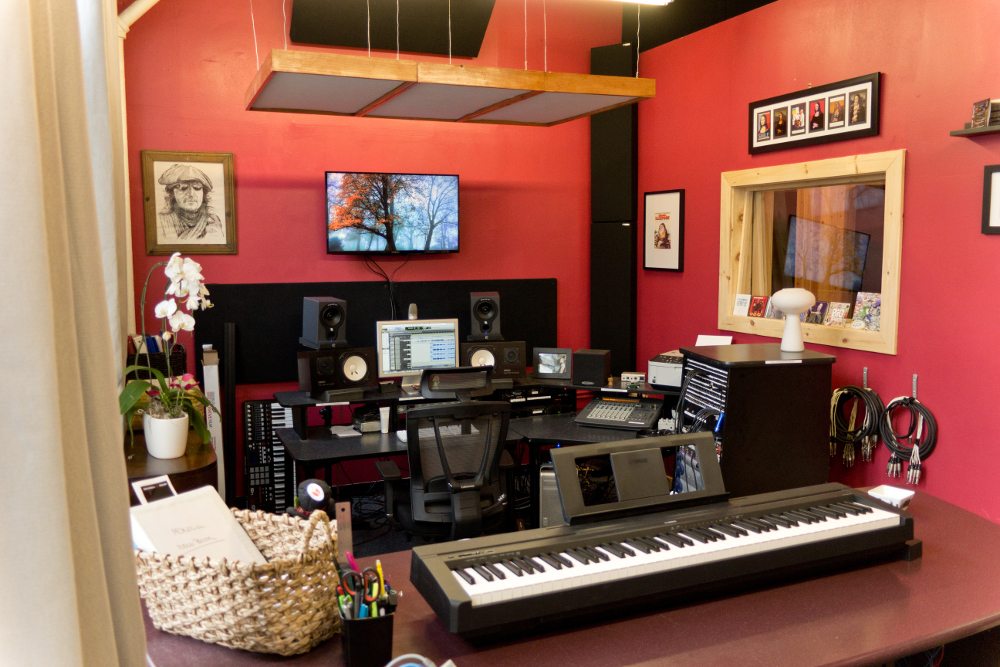
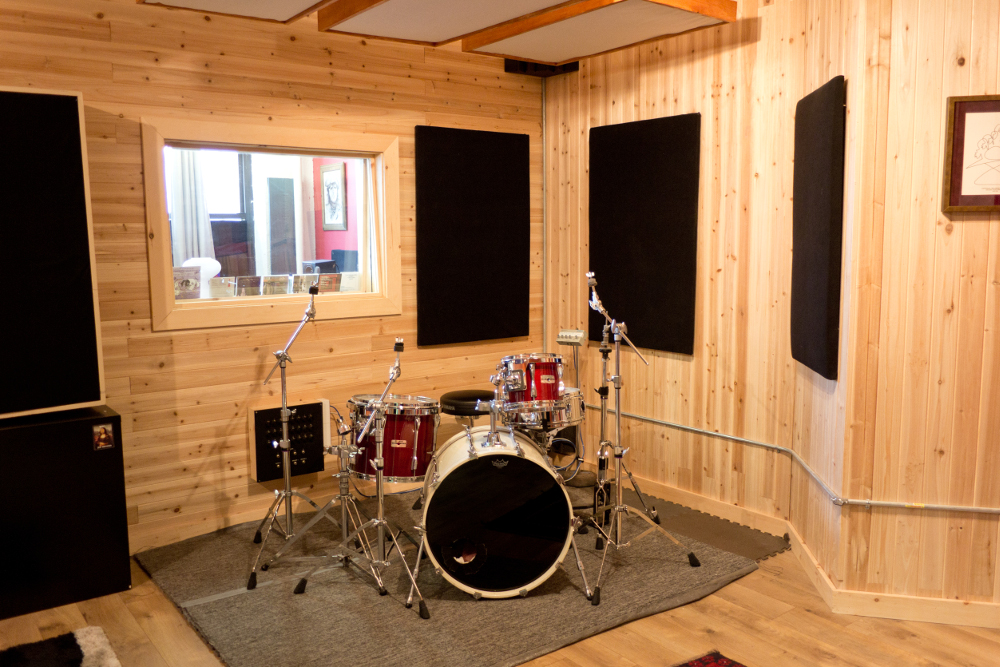
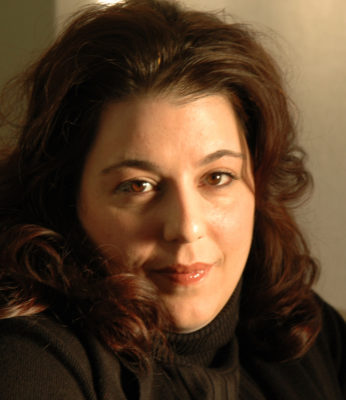
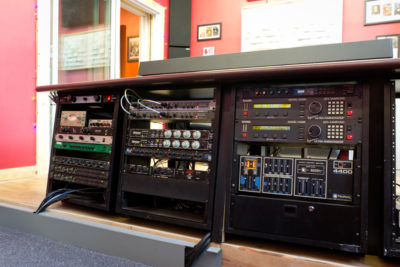
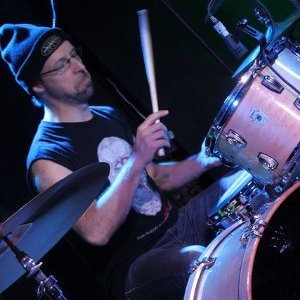
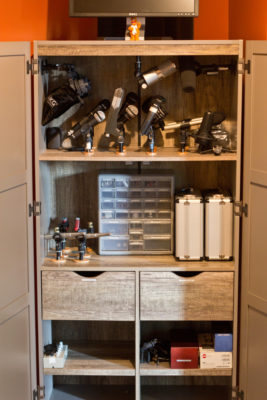
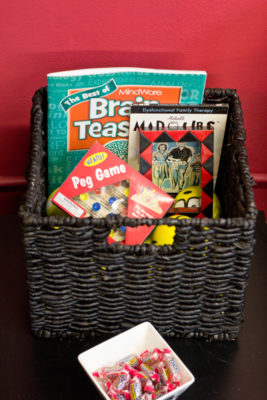
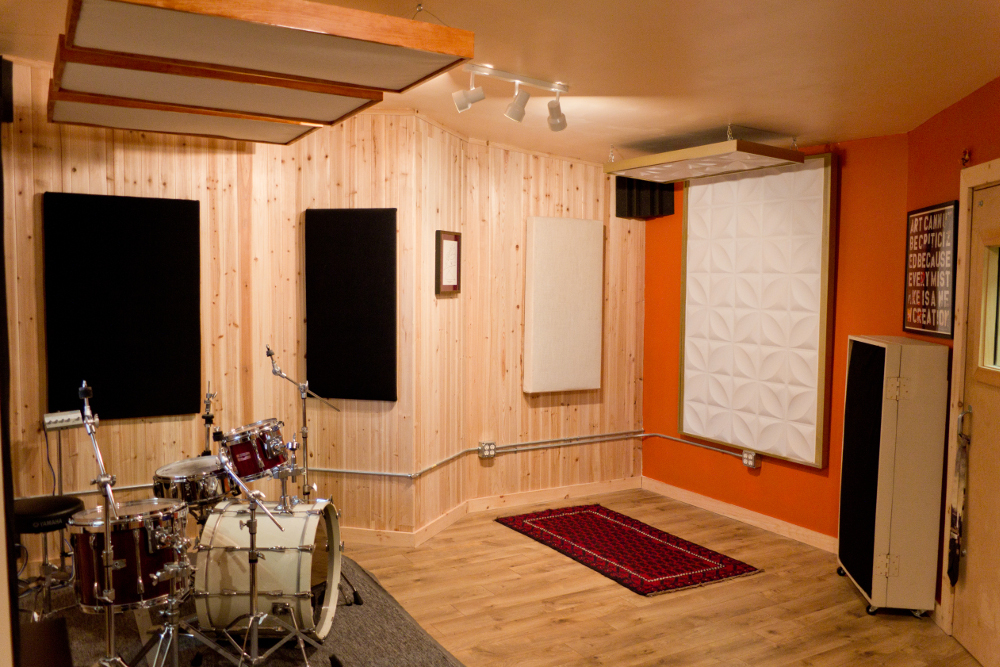
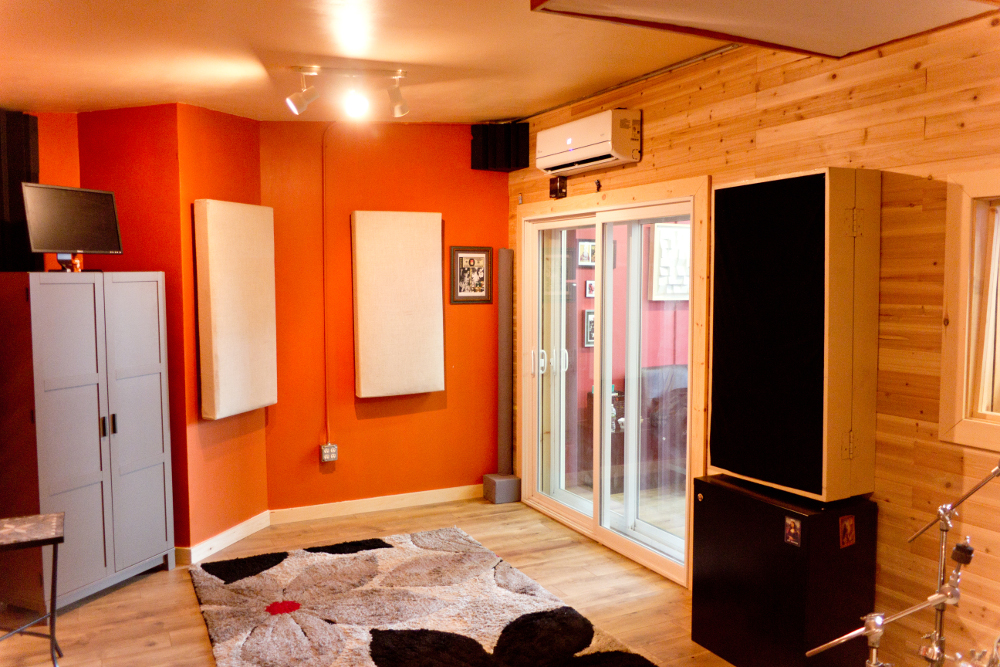
William Kulsar
April 10, 2017 at 1:43 pm (8 years ago)It sounds that Denise & Rich follow a phrase “Don’t Quit” which is what they have done repeatedly.
Danwriter
April 13, 2017 at 3:52 pm (8 years ago)?Que¿